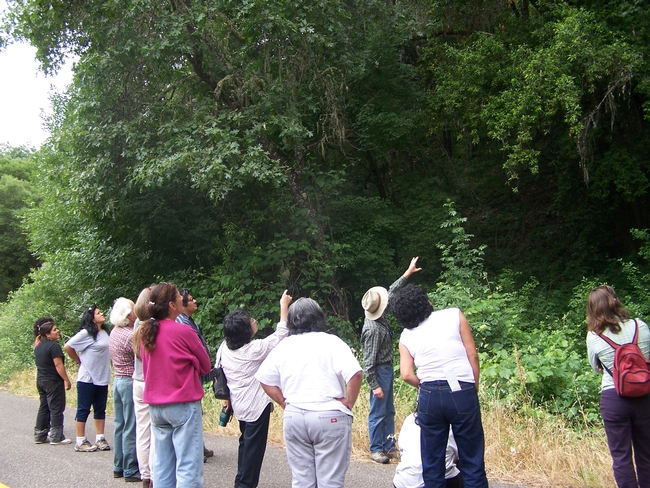The Hopland Research and Extension Center is situated on the traditional, ancestral and unceded lands of the Shóqowa and Hopland People, whose historical and spiritual relationship with these lands continues to this day and beyond (for more on the Land and people history of the site, see this story map). It was, and continues to be, difficult for Indigenous people to thrive in the Shanél Valley after they were forced off the fertile land and had to resettle on relatively small upland parcels and away from freshwater sources. UC ANR staff and academics at the Hopland Research and Extension Center are working to build relationships with the Hopland Band of Pomo Indians who live and work next door at the Hopland and Nacomis Rancherias.
Hopland REC Director John Bailey is committed to building relationships with the intention of enabling maximum benefits for local tribal communities. Tribal Chairperson Sonny Elliot and the Council have been helping us find ways to collaborate after a long history of distrust and despite the University's founding using the sales of expropriated lands (Land-Grant College Act, 1862) and our continued occupation of California Indian territories. Bailey is working with local tribes to define a newly funded Academic Advisor position to build relationships, advance UC policy around working with Tribes, and restore good fire to the landscape with the help of cultural practitioners.
We have secured funding to hire a Native college student to help revitalize ecocultural wetlands in Hopland this summer. The intern will spend time talking with Indigenous people living within the oak woodland landscape or North Coast California and develop a plan for stewarding ecoculturally important sites at the Hopland Research and Extension Center with the Hopland Band of Pomo Indians and local experts in traditional ecological knowledge. This internship offers an opportunity for a Native American college student or two to learn about wetland systems and traditional ecological knowledge; and share their experience with other tribal community members.
Hunting opportunities for Tribal youth and their families and plant collection sites for basket materials are available. The hope is that more cultural ceremonies can take place where generations of Pomo people spent time near the waterways that span Hopland REC. Finally, together we are exploring ways to modify access of existing roads at Hopland REC to allow for potential emergency evacuation for Rancheria residents.
More to come, we hope.
